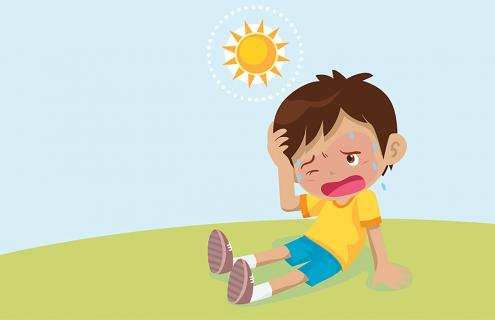
Heat-related illnesses are preventable. Learn the symptoms and what to do if you or a loved one shows signs of having a heat-related illness. The Centers for Disease Control and Prevention (CDC) make the following recommendations.
Heat stroke
Look for
- High body temperature (103˚F or higher)
- Hot, red, dry, or damp skin
- Fast, strong pulse
- Headache
- Dizziness
- Confusion
- Nausea
- Losing consciousness (passing out)
What to do
- Call 911 right away-heat stroke is a medical emergency!
- Move to a cooler place.
- Help lower the person’s temperature with cool cloths or a cool bath.
- Do not give the person anything to drink.
Heat exhaustion
Look for
- Heavy sweating
- Cold, pale, and clammy skin
- Fast, weak pulse
- Nausea or vomiting
- Tiredness or weakness
- Headache
- Dizziness
- Fainting (passing out)
What to do
- Move to a cool place.
- Loosen clothing.
- Put cool, wet cloths on body or take a cool bath.
- Sip water.
Get medical help right away if:
- Person is vomiting
- Symptoms are worsening or last longer than an hour
Heat Cramps
Look for
- Heavy sweating during intense exercise
- Muscle pain or spasms
What to do
- Stop physical activity and move to a cool place.
- Drink water or sports drink.
- Wait for cramps to go away before resuming physical activity.
Get medical help right away if:
- Cramps last longer than 1 hour
- Person is on a low-sodium diet
- Person has heart problems